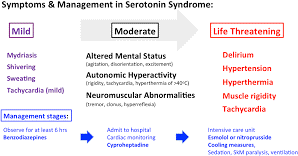The nurse is reviewing the client's prescriptions.
For each body system below, click to highlight the findings that indicate a serious adverse reaction. To deselect a finding, click on the finding again. Each body system may support more than 1 potential assessment finding.
|
Body Systems |
Findings |
|
Head, Eyes, Ears, Nose, and Throat (HEENT) |
Yellowing of the eyes Blurred vision Dry eyes |
|
Gastrointestinal |
Abdominal pain Hard stool |
|
Hematologic |
Increased bruising Increased bleeding tendency Insomnia |
|
Genitourinary |
Red/orange tint to urine Darkening of the urine |
Yellowing of the eyes
Blurred vision
Dry eyes
Abdominal pain
Hard stool
Increased bruising
Increased bleeding tendency
Insomnia
Red/orange tint to urine
Darkening of the urine
The Correct Answer is ["A","B","D","F","G","I","J"]
Yellowing of the eyes could indicate hepatotoxicity, a serious adverse effect associated with some of the anti-tuberculosis medications, particularly rifampin.
Blurred vision could be a sign of optic neuritis, a rare but serious adverse effect associated with ethambutol.
Abdominal pain could indicate hepatitis or hepatotoxicity, which are potential adverse effects of anti-tuberculosis medications like isoniazid and rifampin.
Increased bruising could indicate thrombocytopenia, a serious adverse effect associated with some anti-tuberculosis medications, particularly rifampin.
Increased bleeding tendency could also indicate thrombocytopenia or other hematologic abnormalities.
Red/orange tint to urine could indicate rifampin-induced discoloration of bodily fluids, which is not harmful but can be alarming to patients.
Darkening of urine could also be a result of rifampin-induced discoloration. It's important to differentiate between this harmless side effect and hematuria, which could indicate a more serious issue.
Nursing Test Bank
Naxlex Comprehensive Predictor Exams
Related Questions
Correct Answer is A
Explanation
A. Excessive sweating is a common adverse effect of sertraline, and it is essential for the nurse to educate the client about this potential side effect to enhance medication adherence and manage expectations.
B. Dry cough is not typically associated with sertraline, and its inclusion in the education may confuse the client and undermine the credibility of the nurse's teaching.
C. Increased urinary frequency is not commonly reported with sertraline use; therefore, including it in the client education may lead to misinformation.
D. A metallic taste in the mouth is not a commonly reported adverse effect of sertraline and should not be included in the client education as it may cause unnecessary concern or confusion.

Correct Answer is {"dropdown-group-1":"C","dropdown-group-2":"C"}
Explanation
Rationale:
Serotonin syndrome is a serious drug reaction that results from having too much serotonin in the body. Serotonin is a chemical that plays a role in mood, sleep, appetite and other functions. Some medications, especially antidepressants, can increase serotonin levels and cause serotonin syndrome. The client is taking paroxetine, which is a type of antidepressant called a selective serotonin reuptake inhibitor (SSRI). SSRIs work by blocking the reabsorption of serotonin in the brain, making more serotonin available.
Paroxetine can cause serotonin syndrome if taken at high doses, in combination with other serotonergic drugs, or if abruptly stopped. The client’s symptoms of restlessness, abdominal pain, disorientation and fever are consistent with serotonin syndrome. Other possible symptoms include agitation, confusion, rapid heart rate, high blood pressure, dilated pupils, muscle twitching, rigidity, sweating and shivering. Severe serotonin syndrome can lead to seizures, coma and death. The client should stop taking paroxetine and seek immediate medical attention. Serotonin syndrome can be treated with supportive care and medications that reduce serotonin levels or block its effects. The client may need to switch to a different antidepressant or adjust the dosage under the guidance of their provider.

Whether you are a student looking to ace your exams or a practicing nurse seeking to enhance your expertise , our nursing education contents will empower you with the confidence and competence to make a difference in the lives of patients and become a respected leader in the healthcare field.
Visit Naxlex, invest in your future and unlock endless possibilities with our unparalleled nursing education contents today
Report Wrong Answer on the Current Question
Do you disagree with the answer? If yes, what is your expected answer? Explain.
Kindly be descriptive with the issue you are facing.
